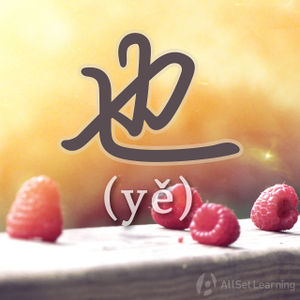Difference between revisions of "The "also" adverb "ye""
ViktorMugli (talk | contribs) |
Wu.mengmeng (talk | contribs) |
||
| Line 1: | Line 1: | ||
| + | {{Grammar Box}} | ||
== Structure == | == Structure == | ||
| Line 61: | Line 62: | ||
[[Category:A1 grammar points]] | [[Category:A1 grammar points]] | ||
| + | {{Basic Grammar|也|A1|也 + V / 也 + Adj|我 <em>也 爱</em> 你 。|grammar point|ASGG25MD}} | ||
| + | {{Similar|"Ye" and "dou" together}} | ||
| + | {{Similar|The all adverb}} | ||
Revision as of 03:29, 13 June 2012
-
Level
-
Similar to
-
Used for
-
Keywords
Structure
Also
The easiest way to express "also" and "too" in Chinese is with the adverb 也. This character is inserted after the subject, before the verb:
Subject + 也 + Verb + Object
Some examples:
- 我 也 喜欢 吃 水饺。
- 你 也 喜欢 喝 啤酒 吗?
- 他们 也 是 法国人。
也 can also be used with adjectives, in the same structure:
Subject + 也 + 很 + Adjective
Some examples:
- 你 也 很 高。
- 他 也 很 胖。
- 这 个 也 很 麻烦。
"Me too"
It can be tricky to know how to say "me too" when you first study 也, as you can't say "我也" - this is not a complete sentence. The correct way is:
- 我 也 是。



